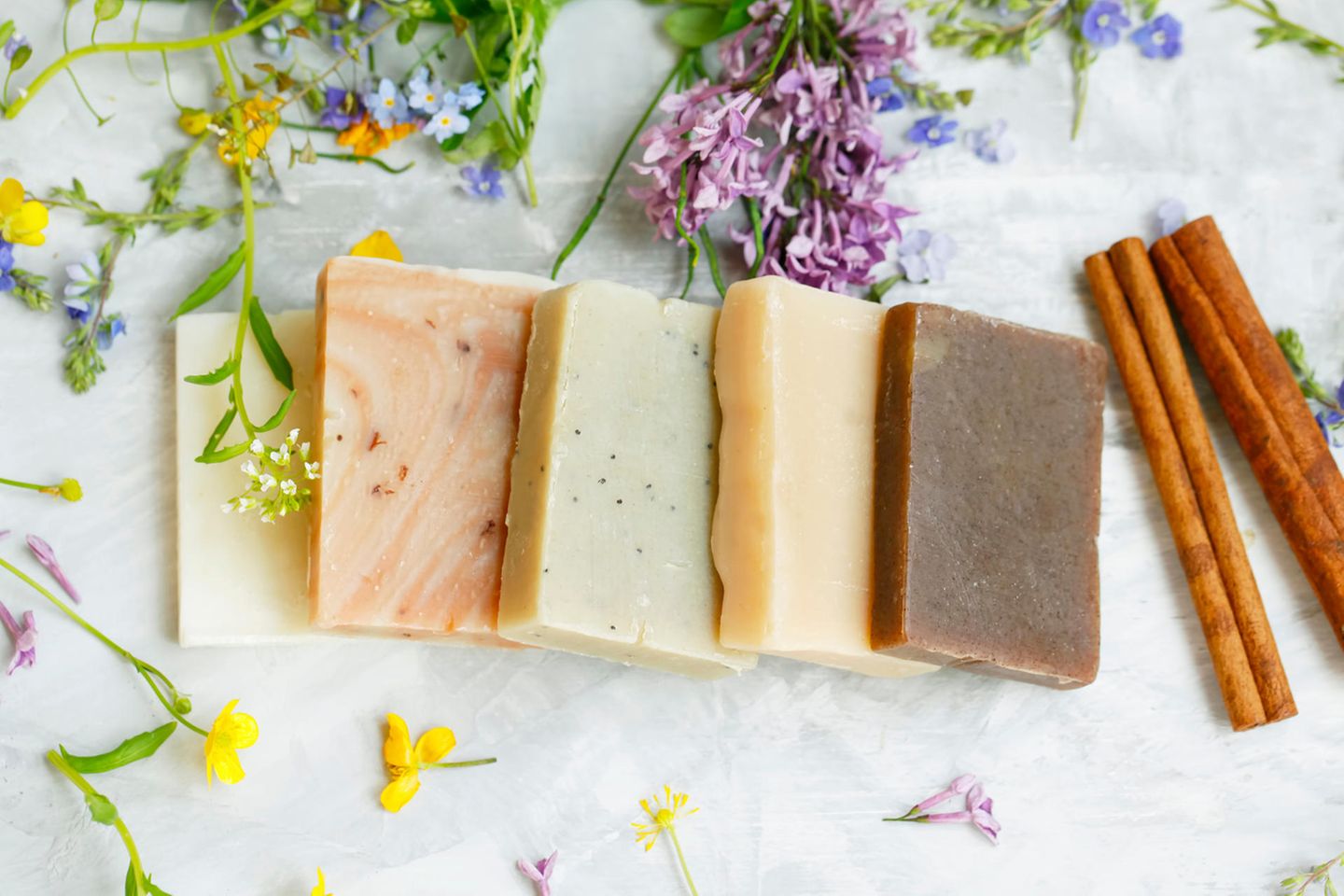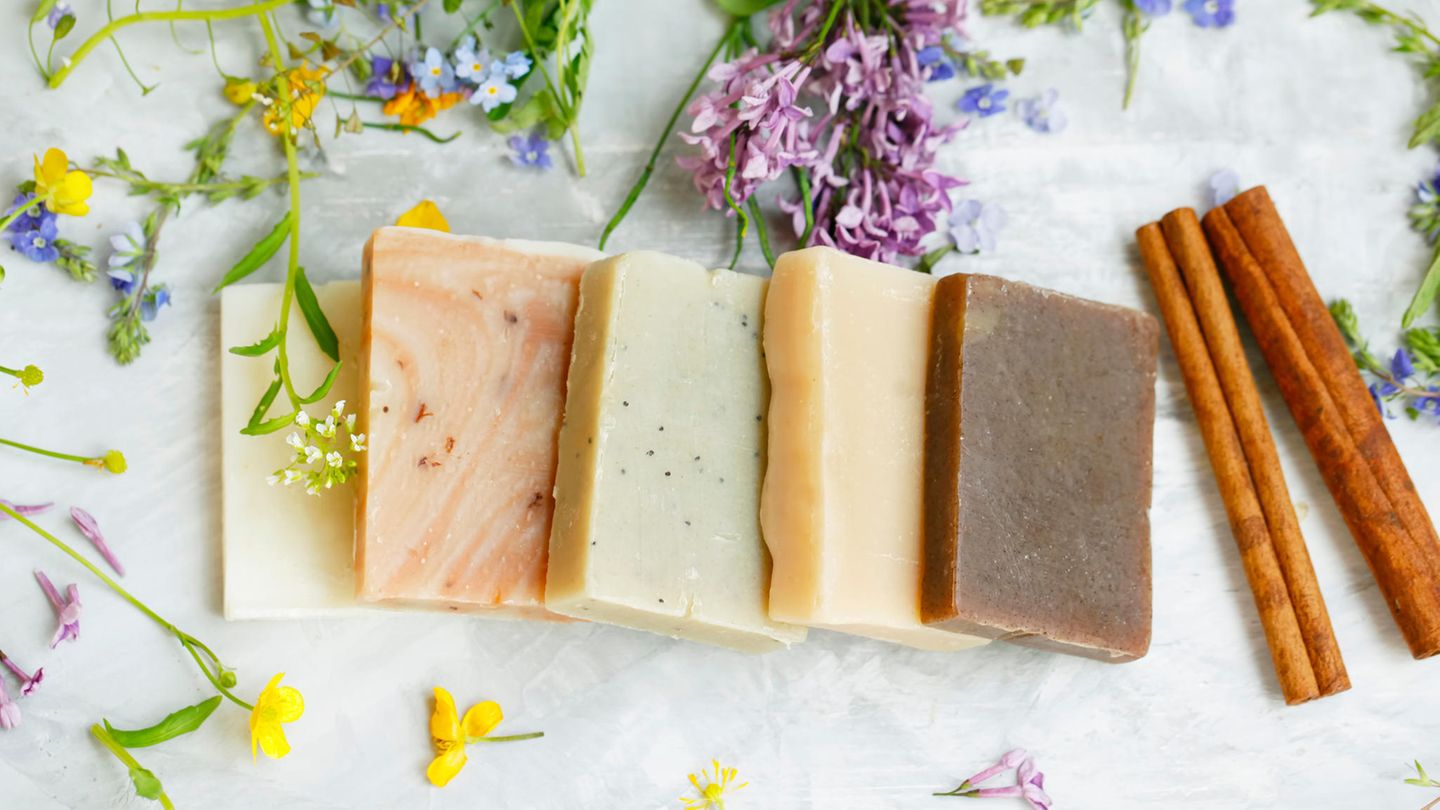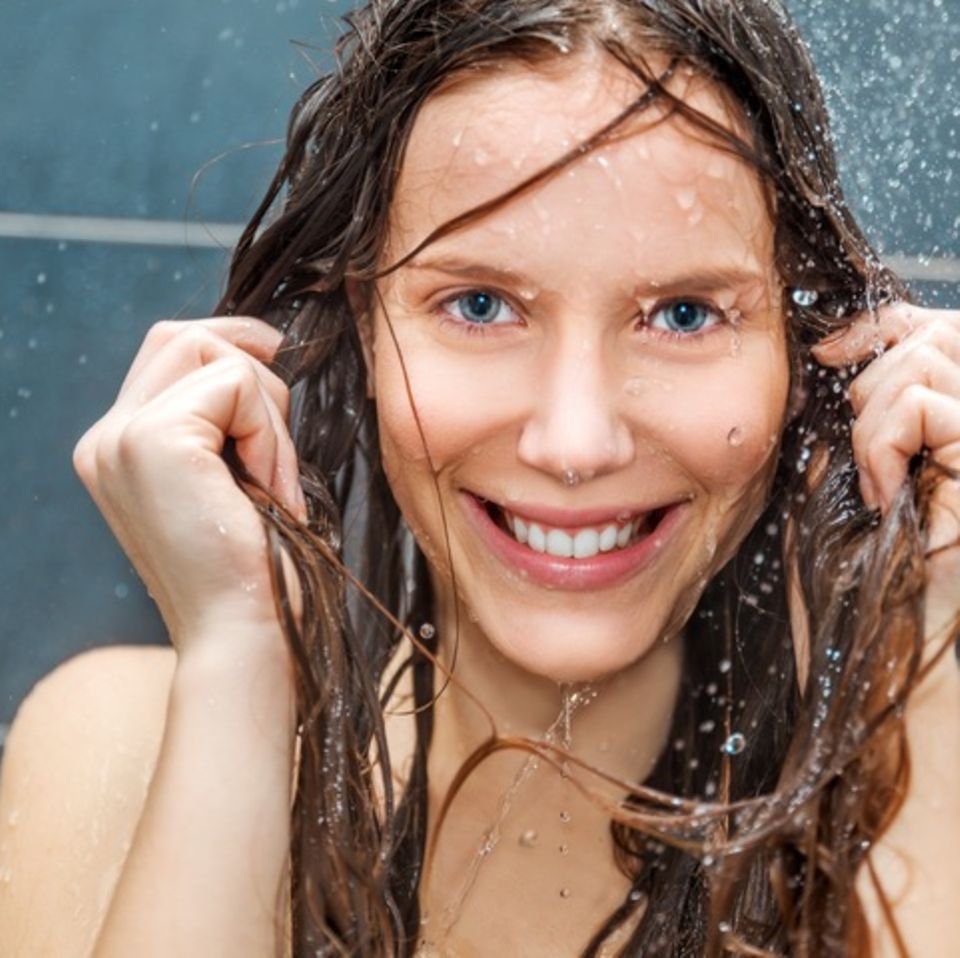Make your own hair soap
With our tips and recipes it works

© catalina.m / Shutterstock
Making hair soap yourself is not difficult at all. The decorative soaps are a cheap and environmentally friendly alternative to liquid shampoo and also ensure beautiful and well-groomed hair. We’ll show you how.
Compared to traditional shampoos hair soap many advantages: It contains no synthetic surfactants, but many nourishing and natural ingredients. This not only protects your hair, but also the environment. In addition, you can get by with a bar of hair soap about as long as with two bottles of shampoo and thus save money.
With some few ingredients you can easily make hair soap yourself. So you know exactly what ingredients are in it and can tailor the recipe to your needs. How this works is explained step by step below.
Make your own hair soap
Basically there is two possibilitiesto make your own hair soap. You can either work with existing curd soap or boil your own soap from scratch. In the following we present both possibilities. We recommend that beginners work with curd soap, as this is the easier way.
1. Make hair soap with curd soap
For this you take a melted one Curd soap as a base and enrich it with oils, herbs and blossoms according to your own wishes. This is simple and leads to a good hair soap as a result.
You need the following ingredients:
- 100 g curd soap
- 50ml of water
- 2 tbsp olive or coconut oil
- 10 drops of essential oil
- Optional: flowers, herbs
Here’s how you do it:
- First you have to Crush curd soap. This is very easy to do with a kitchen rasp or a knife. You then put the soap bars in a saucepan with warm water and heat them up. Mix the ingredients together until you get a thick, creamy mass.
- Next you add to the mass nourishing oils of your choice. Olive oil or avocado oil provide the hair with intensive moisture. Coconut oil creates great lather. Castor oil is also a good choice, because it ensures good combability and a beautiful shine. Grape seed or hemp oil are lighter oils and therefore good for thin or greasy hair. Try different recipes until you find the perfect mix for your hair.
- mix too essential oils into your recipe. These give your hair soap a great scent. Lavender oil is said to have a stress-relieving effect. Orange and mandarin oil, on the other hand, are said to have a cheering effect. Geranium oil has a balancing and calming effect. The same applies here: Try different combinations and find out what you like best. You should only add a few drops, however, as essential oils in high concentrations can irritate the skin. Learn more about essential oils and their effects here.
- As a last step you fill the finished mass into a silicone mold. Depending on your wishes, you can also decorate the soap with flowers or herbs before you let it cool down and harden. After a day or two, your homemade hair soap should come out of the mold easily. Finished!
Boil hair soap yourself
Boiling hair soap yourself is a bit more complicated, not entirely harmless and therefore something for advanced users when it comes to making your own hair soap. You need sodium hydroxide and should wear gloves, safety goggles, and long clothing as sodium hydroxide is corrosive when unsaponified. Be sure to avoid inhaling the fumes directly. For example, wear a respirator or work at an open window.
You need the following ingredients:
- coconut oil
- olive oil
- shea butter
- sodium hydroxide
- Cold water
- Volatile oil
- Optional: soap color, herbs
Here’s how you do it:
- First of all, you should weigh ingredients. To determine the exact amount of sodium hydroxide in relation to the other ingredients, be sure to have one soap calculator use. Depending on whether you have a high or low degree of overfatting want to achieve, the recipe is different. Superfatting indicates how many unsaponifiable oils are present in the finished soap. Dry hair benefits from a high level of excess fat, thin or greasy hair from a low level.
- Pour cold water into a saucepan and gradually add the weighed out water, stirring constantly sodium hydroxide added. When water and sodium hydroxide mix, heat is generated. Danger: Be sure to follow the order and slowly add the sodium hydroxide to the liquid, never adding the liquid to the sodium hydroxide.
- Set the lye aside and leave it cool down.
- bring coconut oil and shea butter in a saucepan over low heat to slowly melt, stir well, then add the oils.
- When your lye and melted fats have cooled to around 40 degrees, pour them in Lye through a sieve into the melted fats. The screen will filter out any undissolved bits of sodium hydroxide. Mix the soapy water well with a hand blender for about 30 seconds to create a creamy, homogeneous mass.
- Then pour the soap glue into one silicone mold. When a thin layer has formed, refrigerate the soap. After 24 hours you can take the soap out of the mold. But beware: The soap still has to mature. To do this, leave them covered in a cool place for at least four weeks.
Tip: If you put herbs or blossoms in the molds before filling the soap, they will later appear as pretty decorations on top of the finished soap.
Apply hair soap
The use of hair soap differs in a few points from washing your hair with a liquid shampoo. You should therefore keep a few tips in mind:
- Either take all the soap with you into the shower or cut yourself beforehand small piece away. This way you can keep the leftover soap in a dry place and it won’t get soggy unnecessarily.
- Lather the soap with water in your hands and distribute it foam on hair and scalp. Then rinse the foam out thoroughly.
- After washing, one is recommended sour rinse of water and apple cider vinegar, which makes hair shinier and easier to comb. Especially with hard water, an acidic rinse prevents deposits of lime soap in the hair. The rinse is not flushed out. The smell will dissipate on its own as the hair dries.
- Keep the soap in a soap dish or one soap pouch on to allow it to dry and last longer.
- When you switch from liquid shampoo to hair soap, hair may feel stringy at first. Be patient: Over time, the hair will get used to the formula without artificial additives and will then look healthier and shinier.
Buy hair soap
Would you rather try out a store-bought hair soap before you go to the stove to boil the soap? No problem, because there are many great quality hair soaps on the market for a wide variety of needs. Soaps with high-quality (organic) ingredients such as e.g. B. the following:
the Hair soap with aloe vera by Savion contains valuable vegetable oils such as coconut oil, olive oil, castor oil and almond oil as well as organic quality shea butter and aloe vera gel. This is only gently worked into the product after the saponification process, so that the moisturizing and strengthening active ingredients are retained.
There is also one from Savion Hair soap with thermal water. This contains many important minerals from the freshly taken medicinal water from a thermal spring and also cares for the hair with high-quality olive oil, wheat germ oil, castor oil and almond oil. Lavender and rose oil provide the pleasant scent.
the Hair soap with sage and tea tree oil by Meina is particularly good against dandruff and greasy hair. The power duo regulates sebum production and strengthens the hair roots. Lavender is responsible for the fragrant scent and soothes the scalp. Calendula, olive oil, coconut oil and shea butter provide care and moisture. The manufacturer has many other exciting varieties in the range, for example with activated carbon or Ayurvedic herbs.


